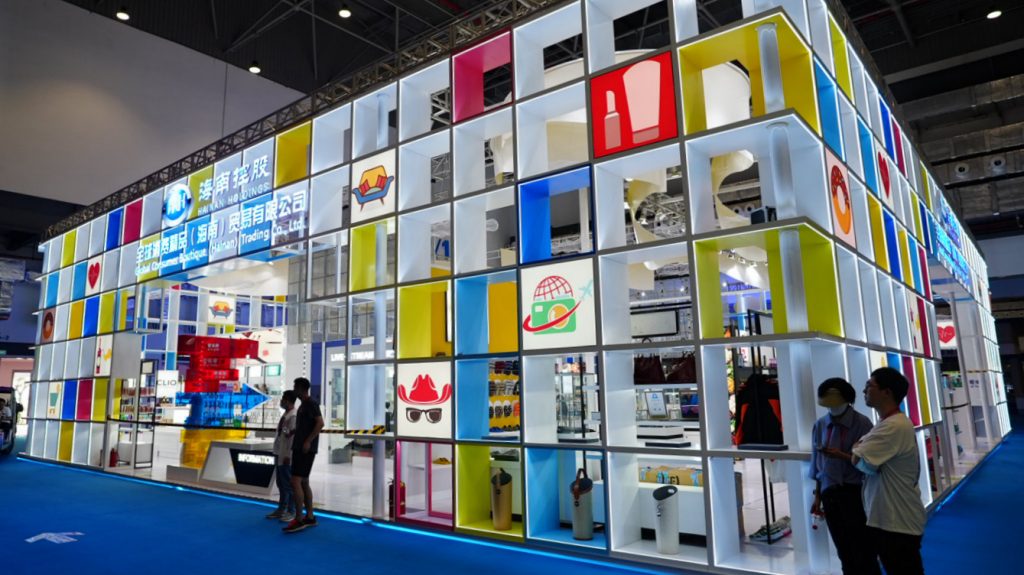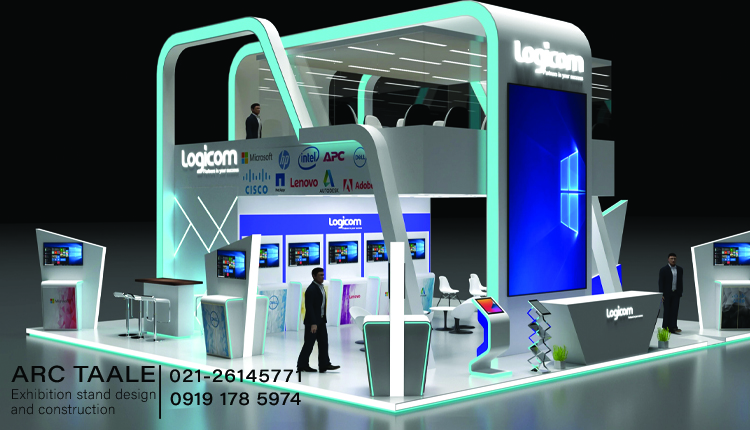Holding exhibitions in China provides an unparalleled opportunity to tap into one of the world’s largest and fastest-growing markets. China is known for its dynamic economy, technological advancements, and thriving trade show culture. Major cities like Shanghai, Beijing, Guangzhou, and Shenzhen boast world-class exhibition centers with extensive infrastructure and facilities. With a vast consumer base and a diverse range of industries, China offers immense potential for business expansion and networking opportunities.
Tips and Steps for Holding Exhibitions in China
Holding exhibitions in China , a dynamic and rapidly growing market, requires meticulous planning and cultural understanding. Here are essential tips and steps to ensure a successful exhibition in this diverse and business-oriented nation
Comprehensive Market Research
Conduct extensive market research to understand the local consumer behavior, preferences, and trends. Adapt your exhibition offerings to align with the needs and interests of the Chinese audience, considering the vast regional differences within the country.
Cultural Sensitivity and Language
Demonstrate respect for Chinese culture, traditions, and social norms. Language plays a crucial role; consider hiring interpreters and translating exhibition materials into Mandarin and relevant local dialects. Addressing attendees in their native language fosters a stronger connection.
Choose the Right Location
Select a suitable city and venue based on your target audience and industry. Tier 1 cities like Beijing, Shanghai, and Guangzhou are popular choices due to their economic significance and excellent infrastructure. Ensure the venue is easily accessible and offers necessary facilities.
Government Regulations and Permits
Familiarize yourself with Chinese regulations concerning exhibitions, permits, and licenses. Work closely with local authorities to obtain necessary permissions, ensuring compliance with local laws and regulations.
Partner with Local Experts
Collaborate with local event organizers, agencies, or businesses. Local partners provide invaluable insights into the Chinese market, assist with logistics, and navigate cultural nuances, enhancing your exhibition’s success.
Effective Marketing and Promotion
Craft a targeted marketing strategy tailored to the Chinese audience. Leverage popular social media platforms like WeChat and Weibo, along with Chinese business-oriented platforms like Alibaba and Tencent. Engage with Chinese influencers and utilize local PR channels for maximum exposure.
Booth Design and Technology
Invest in attractive booth designs and incorporate innovative technologies. Chinese consumers are tech-savvy and appreciate interactive displays, augmented reality experiences, and live demonstrations. High-quality visuals and engaging content are essential to capture attention.
Networking Opportunities
Arrange networking events, seminars, and workshops to facilitate interactions between exhibitors, attendees, and industry experts. Networking is highly valued in Chinese business culture; building relationships can lead to fruitful collaborations.
Suggested article: Holding Exhibitions in Europe
Strategies for Holding Exhibitions in Germany and China
Holding exhibitions that bridge the gap between Germany and China involves navigating diverse cultures, business practices, and market expectations. Successfully orchestrating such events requires a nuanced approach, blending the efficiency of German precision with the intricate networks of Chinese business dynamics
Cultural Understanding and Respect
Embrace the cultural differences between Germany’s structured business environment and China’s relationship-focused approach. Respect for traditions, values, and etiquettes in both nations is essential for fostering meaningful connections.
Language Proficiency
Facilitate effective communication by employing bilingual staff and translating exhibition materials into German and Mandarin. Clear communication in both languages ensures seamless interactions between German and Chinese exhibitors and attendees.
Strategic Location Selection
Choose exhibition venues strategically located in both countries’ economic hubs. In Germany, cities like Frankfurt, Munich, or Berlin are popular choices, while in China, metropolises such as Shanghai, Beijing, or Shenzhen offer access to influential business communities.
Collaborative Partnerships
Forge partnerships with local event organizers, industry associations, and businesses in both nations. Collaborative efforts facilitate a smoother integration of German and Chinese exhibitors, enhancing networking opportunities and overall event success.
Regulatory Compliance
Comply with the regulatory requirements of both Germany and China. Understand tax implications, import-export regulations, and event licensing procedures in both countries to ensure legal adherence and prevent potential challenges.
Best Venues for Holding Exhibitions in China
When it comes to holding exhibitions in China, selecting the right venue is pivotal to the event’s success. China boasts a variety of world-class exhibition centers and venues that cater to diverse industries. Here are some of the best places for holding exhibitions in this vast and dynamic nation
China Import and Export Fair Complex
As one of the largest exhibition centers in Asia, the Canton Fair Complex offers extensive exhibition space, state-of-the-art facilities, and a strategic location in Guangzhou. It hosts a wide range of international trade shows and exhibitions, making it a top choice for businesses looking to showcase their products to a global audience.
National Exhibition and Convention Center
Located in Shanghai, one of China’s most cosmopolitan cities, this center is the world’s largest single building exhibition complex. Its vast space, modern amenities, and excellent connectivity make it a preferred venue for international exhibitions, trade fairs, and conferences.
Beijing Exhibition Center, Beijing
Situated in the heart of Beijing, the Beijing Exhibition Center combines historical charm with modern facilities. It is an ideal choice for exhibitions related to culture, arts, technology, and innovation. The center’s central location enhances accessibility for both exhibitors and attendees.
Shanghai New International Expo Centre
SNIEC is a leading exhibition venue in Shanghai, known for its flexible exhibition halls and excellent services. It hosts a wide array of exhibitions, including automotive shows, electronics expos, and medical equipment fairs. Its proximity to Shanghai’s financial district adds to its appeal.
Costs of Holding Exhibitions in China
Holding exhibitions in China involves a series of costs that need to be meticulously planned and managed to ensure a successful event. These costs vary based on factors such as the location, venue, size, duration, and the specific requirements of the exhibition. Here’s an overview of the costs associated with holding exhibitions in China
Venue Rental Fees
One of the major costs is renting the exhibition venue. The fees depend on the location (tier 1 cities tend to be more expensive), the size of the space required, and the facilities provided by the venue. Premium venues with advanced facilities command higher rental fees.
Exhibition Booth Design and Construction
Designing and constructing exhibition booths involve costs related to materials, design complexity, branding, lighting, and technology integration. The quality of the booth design significantly impacts the overall exhibition experience and attracts attendees.
Marketing and Promotion
Marketing expenses include digital marketing, social media campaigns, printed materials, press releases, collaborations with influencers, and media partnerships. Promotional activities are crucial for attracting exhibitors and attendees, both locally and internationally.
Logistics and Transportation
Logistics costs include shipping, customs clearance, local transportation within China, storage, and handling charges. Proper logistics planning ensures the timely arrival of exhibition materials and products, especially for international exhibitors.
Personnel and Staffing
Personnel costs include salaries for event staff, security personnel, ushers, translators, and technicians. Other expenses cover uniforms, accommodation, meals, and travel allowances for the staff involved in organizing and managing the exhibition.
Utilities and Services
Costs related to utilities such as electricity, water, internet services, cleaning, waste disposal, and technical support for exhibitors and attendees. Adequate utilities are essential for a seamless exhibition experience.
Permits and Licenses
Expenses associated with permits, licenses, insurance coverage, application fees, security deposits, and additional fees required for legal compliance with Chinese regulations. Ensuring all necessary paperwork is in order is crucial to avoid legal issues.
Catering and Hospitality
Costs for providing refreshments, catering services, and hospitality amenities for exhibitors, attendees, and staff. This includes snacks, beverages, meals, and arrangements for VIP guests.
Technology and Innovation
Incorporating technology and innovation into the exhibition, such as interactive displays, virtual reality experiences, and digital engagement tools. Costs involve renting or purchasing equipment and software licenses.


